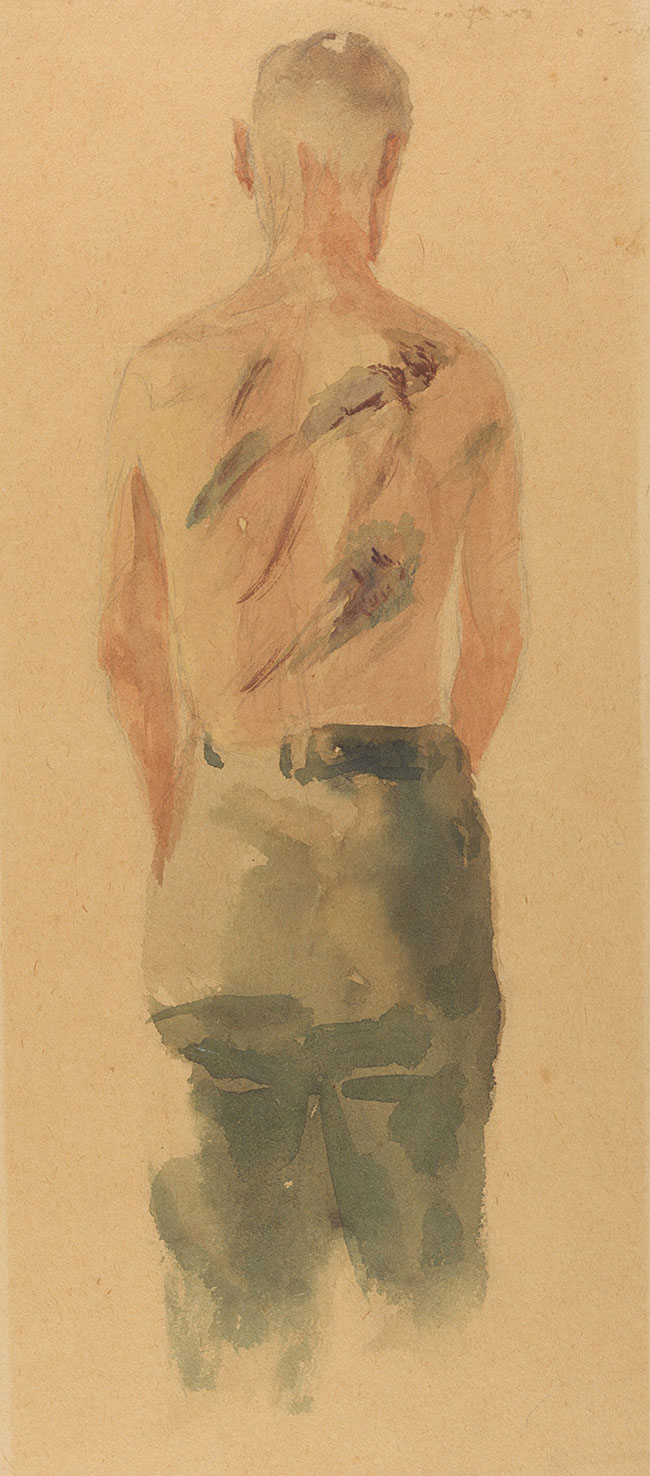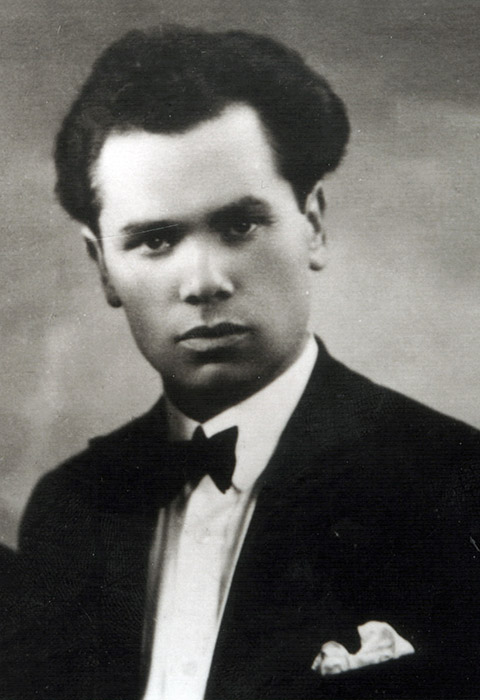
Watercolor on paper
29.9 x 16.3 cm
Collection of the Yad Vashem Art Museum, Jerusalem

After graduating from the Vilnius Academy of Arts, Jacob Lipschitz worked there teaching printmaking techniques. In addition, he illustrated textbooks and participated in exhibitions. In June 1941 he was interned in the Kovno ghetto with his wife, Lisa, and daughter, Pepa. He was assigned to a forced labor brigade, worked in the ghetto workshops, and painted secretly at night in the attic. He later joined the artist Esther Lurie and a group of other artists, who documented ghetto life. Fearing Aktions, the couple smuggled Pepa out of the ghetto. She was hidden by some Christians, the Zabielavičius family. When the ghetto was liquidated in the summer of 1944, Lipschitz was transported to the Dachau camp and from there to forced labor in the Kaufering camp. Due to his poor health and the inhuman conditions in the camp, Lipschitz died in March 1945. After the war, Lisa and Pepa returned to the ghetto and retrieved Lipschitz's paintings that had been hidden in the graveyard.